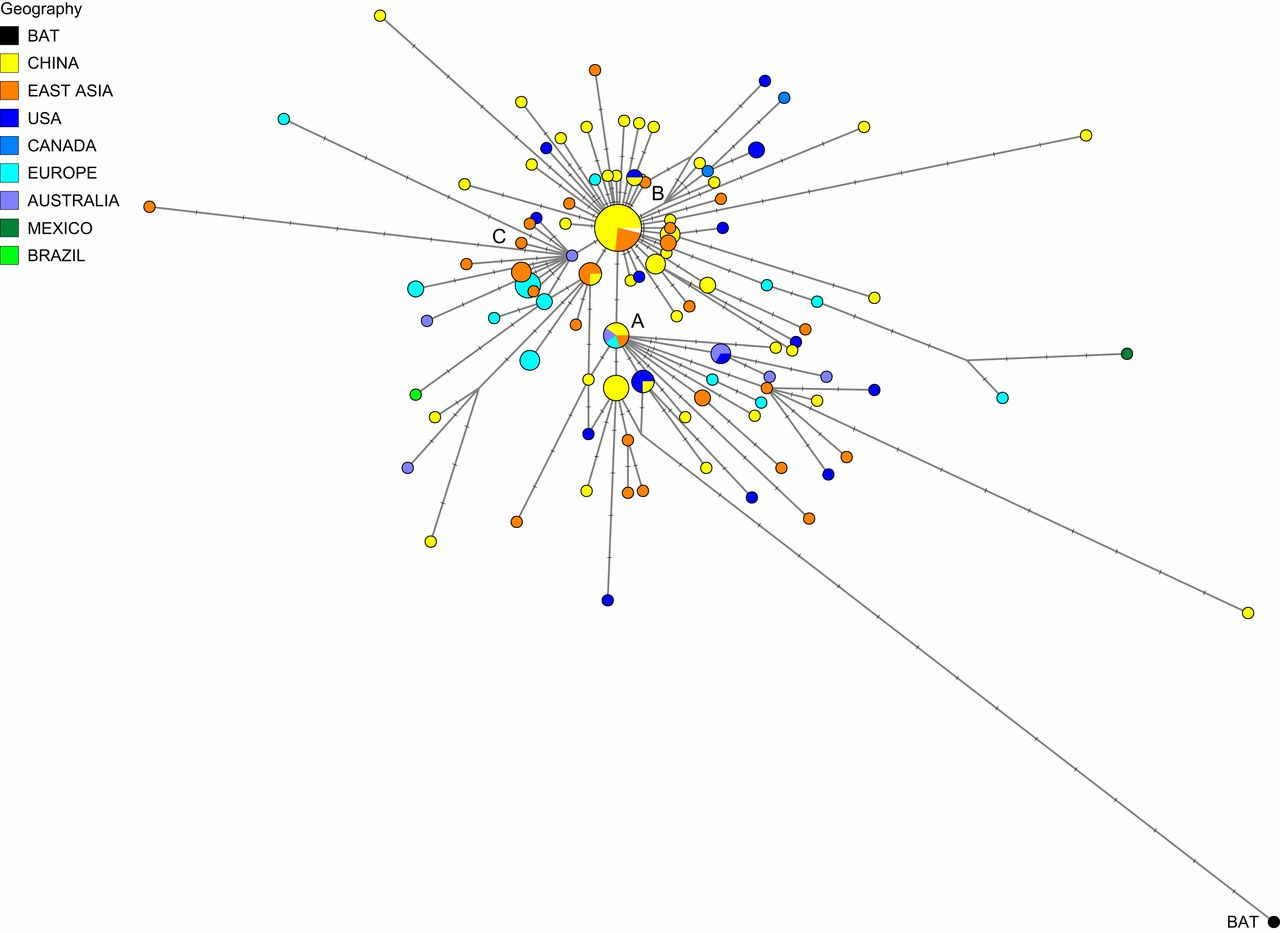


The scientists have tracked COVID-19's movement /Peter Forster, Lucy Forster, Colin Renfrew, and Michael Forster/PNAS
The COVID-19 virus has mutated as it has spread, research has found, allowing scientists to track its origins and potentially predict future trends.
The study may also help to establish whether the divergence in severity of the illnesses suffered by different people may be linked to infection from different strains of the coronavirus.
What is believed to be the earliest known strain of the virus, most closely related to that found in pangolins and bats, is termed by the scientists as "Type A." This variation is commonly found in the U.S. and Australia. Type A appears to have mutated into "Type B," which then evolved into a "Type C," which is the predominant strain found in Europe.
Lead author of the study, Peter Forster of Cambridge University in the UK, (above) told CGTN Europe how the journey from Type A to Type C was not apparent before this new research.
"Type A is the original type that would have infected humans and then it would mutate and change into Type B. This Type B was then the first genome to be picked up in Wuhan when the disease became apparent.
"And so researchers might be forgiven for thinking at the time that B is the original type. But actually it's not, it's Type A, which on one hand is only a minority type, but B has become the majority type during the outbreak. And that has mutated further into C."
The scientists noticed that Type B was almost exclusively found in East Asia, leading them to question whether people living outside the region had some kind of resistance to it.
But as Forster pointed out, it's hard to find a full picture of the virus because "the research effort is very different from country to country."
"We have 40 genomes sequenced by laboratories [in the UK] which is not a great deal, but it's better than nothing. For Italy we have five or six. For Germany we have five or six. Netherlands has done 100, the Americas 300," he told CGTN Europe.
The study, conducted by scientists from the University of Cambridge, the University of Kiel, the German Institute of Forensic Genetics and Fluxus Technology and Lakeside Healthcare in the UK, can be used to create a map of the coronavirus's journey around the world.
The research was published in the Proceedings of the National Academy of Sciences.
The researchers reported they could not trace the virus to its roots as yet.
However, subsequent work, which has not been peer reviewed, allowed the researchers to conclude that the virus's first transmission to humans was between the middle of September and early December 2019, Forster said.

 Award-winning photos show poverty reduction achievements in NE China's Jilin province
Award-winning photos show poverty reduction achievements in NE China's Jilin province People dance to greet advent of New Year in Ameiqituo Town, Guizhou
People dance to greet advent of New Year in Ameiqituo Town, Guizhou Fire brigade in Shanghai holds group wedding
Fire brigade in Shanghai holds group wedding Tourists enjoy ice sculptures in Datan Town, north China
Tourists enjoy ice sculptures in Datan Town, north China Sunset scenery of Dayan Pagoda in Xi'an
Sunset scenery of Dayan Pagoda in Xi'an Tourists have fun at scenic spot in Nanlong Town, NW China
Tourists have fun at scenic spot in Nanlong Town, NW China Harbin attracts tourists by making best use of ice in winter
Harbin attracts tourists by making best use of ice in winter In pics: FIS Alpine Ski Women's World Cup Slalom
In pics: FIS Alpine Ski Women's World Cup Slalom Black-necked cranes rest at reservoir in Lhunzhub County, Lhasa
Black-necked cranes rest at reservoir in Lhunzhub County, Lhasa China's FAST telescope will be available to foreign scientists in April
China's FAST telescope will be available to foreign scientists in April